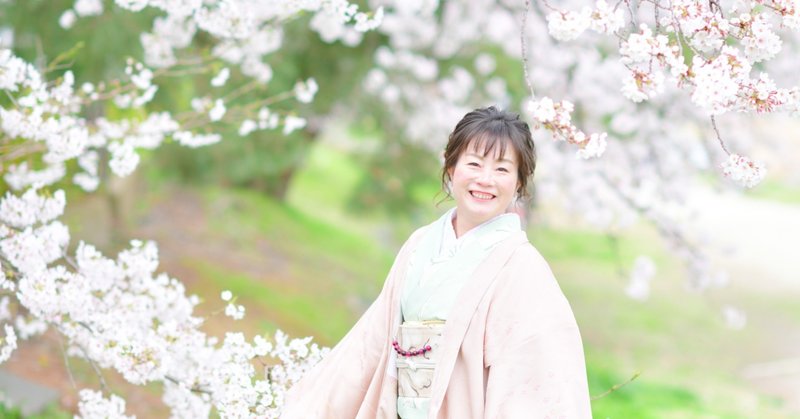
Vol.38 The difference between Kimono and Yukata着物と浴衣の違い
Hello. I'm Yuko.
It's getting colder and colder. On the calendar, "Ritto" has passed and the season is heading toward winter full scale.
こんにちは。裕子です。
段々寒くなってきましたね。暦の上では「立冬」も過ぎ、本格的に季節は冬に向かっています。
Well, today I would like to talk about kimono and yukata, which look similar but are actually very different. The shapes are very similar, "kimono" and "yukata", but if you look closely, there are many differences. The characteristic differences are as follows.
さて、今日は似ているようで実は大きく違う、着物と浴衣についてお話しますね。形はとても似ている「着物」と「浴衣」ですが、よく見ると違いが沢山あります。その中でも特徴的な違いは以下の通りです。

1. Yukata is limited to summer. Kimono is worn all year round by changing the material and weave of the fabric. 浴衣は夏限定。着物は素材や生地の織り方を変えて1年中着用する。
As you all know, yukata is made of a very thin fabric. Therefore, it can only be worn in summer (July, August). Kimono called "Awase" with lining are from October to May, kimono called "Hitoe" without lining are in June and September, and kimono called "summer" with a sense of sheerness are in July and August.
皆さんご存知の通り、浴衣はとても薄い生地で作られています。そのため夏(7月、8月)しか着られません。着物は裏地を付けた「袷」と呼ばれる着物を10〜5月まで、裏地を外した「単」と呼ばれる着物を6月と9月に、透け感のある「夏物」と呼ばれる着物を7月と8月に着ます。
2. Yukata was originally a bathrobe. 浴衣はもともとはバスローブ。
In the Edo period, ordinary people's houses did not have a bath. They went to a public bath called "Yuya" to take a bath. The kimono worn after the bath was a yukata. Therefore, yukata is often made of cotton, which is very thin and easily absorbs sweat.
江戸時代、一般庶民の家にはお風呂がありませんでした。「湯屋」と呼ばれる銭湯にお風呂に入りに行っていました。お風呂上がりに着用する和服が浴衣だったわけです。そのため、浴衣はとても薄手で汗を吸いやすい綿の素材が多いです。
3. Yukata is the most casual Japanese clothing. 浴衣は和服の中で1番カジュアル。
Because it was originally a kimono worn after taking a bath, it is still the most casual kimono among Japanese clothes. Kimono has a "class" from formal wear to everyday wear.
もともとお風呂上がりに着る和服だったため、今でも和服の中では1番カジュアルな位置付けです。着物はフォーマルで着られるものから普段着まで「格」があります。
4 . Wear a long undershirt(Nagajuban) under the kimono. 着物の下には長襦袢を着る。
You cannot wear kimono as one clothe. Be sure to wear what is called a "long undershirt(Nagajuban)" under the kimono. Nagajuban is equivalent to "showing underwear" if it is replaced in modern times. You can see a glimpse from around the sleeves, or you can see white or embroidered half-collars on the neckline.
着物は1枚で着ることができません。着物の下には必ず「長襦袢」と呼ばれるものを着ます。長襦袢は現代に置き換えるなら「見せる下着」に相当します。袖まわりからチラッと見えたり、衿元に白や刺繍の半衿が見えます。
5. The obi to match changes 合わせる帯が変わる
As a general rule, wear a "Hanhaba obi(half-width band)" for yukata and a "Nagoya obi" or "Fukuro obi" for kimono. Hanhaba obi is characterized by a gorgeous shape with many arrangements such as ribbons and other knots, and the Nagoya obi and the Fukuro obi are characterized by a square shape called "Odaiko". The Hanhaba obi can only be worn in casual places, and the drum can be worn in any scene.
原則、浴衣には「半幅帯」を、着物には「名古屋帯」か「袋帯」を合わせます。半幅帯はリボンなどの変わり結びなどアレンジが多く華やかな形が特徴で、名古屋帯、袋帯は「お太鼓」と呼ばれる四角の形が特徴的です。半幅帯はカジュアルな場所のみ着用可能で、お太鼓はどのシーンでも着用可能です。

As you can see, there are various differences between "kimono" and "yukata".
このように「着物」と「浴衣」では様々な違いがあります。
The biggest feature that I personally think is that kimono has a culture of "showing some part of it". There are many parts that can only be seen a few centimeters, such as nagajuban, haneri and obi sashes, in contrast to kimono and obi that occupy a large area. However, just by changing the color of the part or the visible range that can be seen only a few centimeters or millimeters, the image of the whole figure will change drastically.
私が個人的に思う最大の特徴は、着物は「チラ見せ」の文化があるということです。長襦袢、半衿、帯揚、帯締など、数センチしか見えないパーツが多く、広い面積を占める着物や帯とは対照的です。でも、この数センチしか見えない箇所の色を変えたり見える範囲を数ミリ変えたりするだけで、着姿全体のイメージががらりと変わります。

This style (showing a little park of it) is not limited to kimono, but can be seen in various things from ancient Japan, such as the modeling of shrines and temples, the expression of books in Japanese literature, and the arrangement of restaurants. By all means, please look for "showing a glimpse" of ancient Japanese things.
Also, if you have a chance to wear a kimono next time, please be aware of the "showing a little part" such as nagajuban, haneri and obi sash.
このチラ見せは着物に限らず、神社仏閣の造形や日本文学の書物の表現、料亭のしつらえなど、日本古来からの様々なものに見受けられます。是非、日本古来のものに「チラ見せ」をさがしてみてください。
また、次回着物を着る機会があれば、是非長襦袢、半衿、帯揚、帯締などの「チラ見せ」を意識してみてくださいね。
この記事が気に入ったらサポートをしてみませんか?
